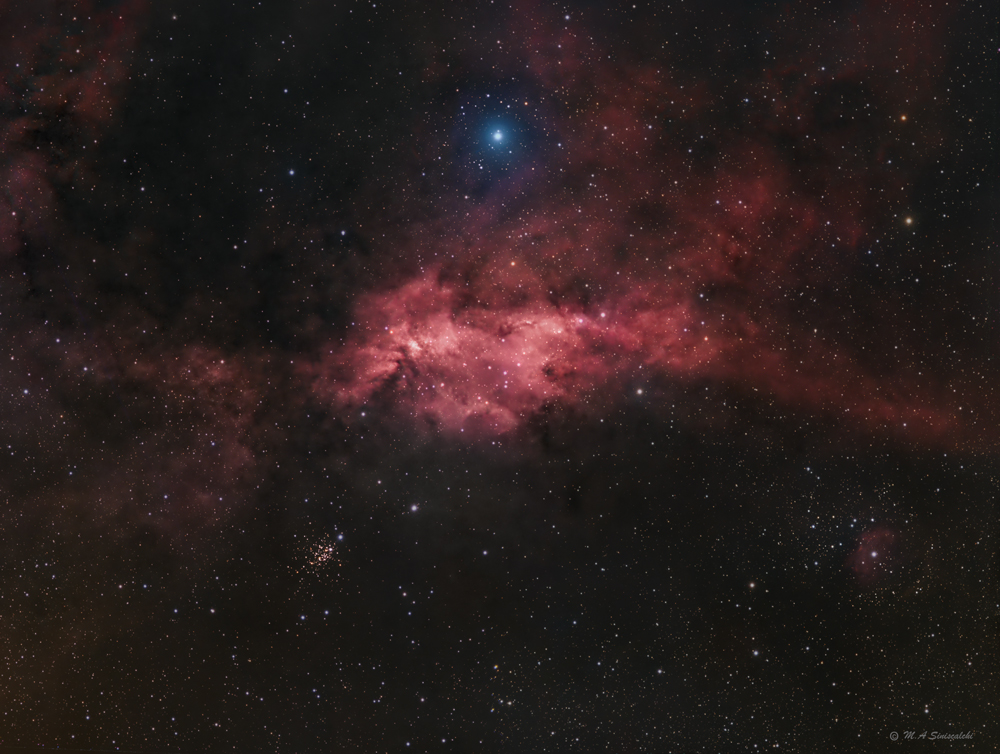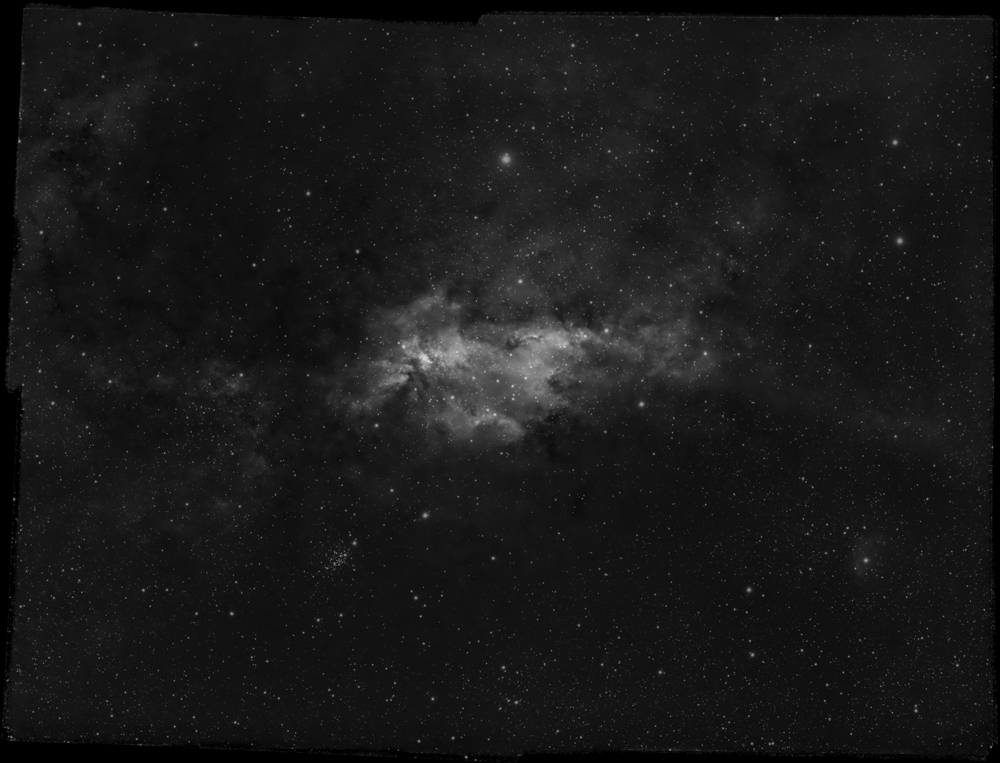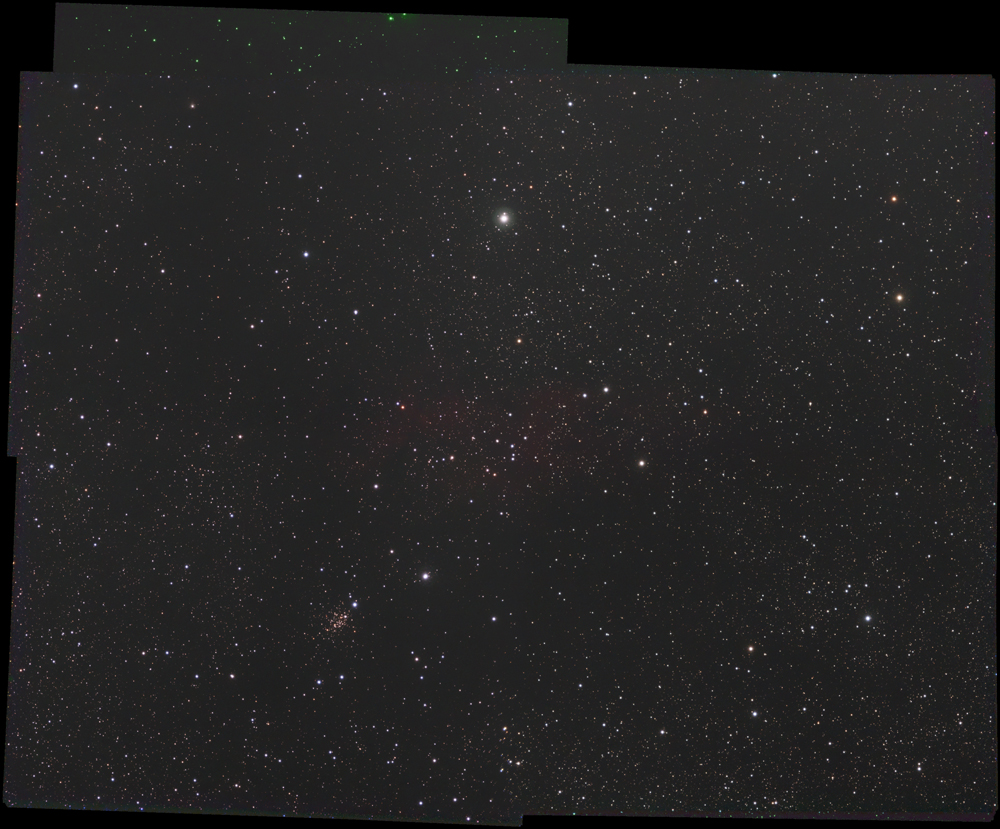© 2022 Michael A. Siniscalchi
SH2-154
Emission Nebula in Cepheus
RA:22h 47m 55s Dec: +60 39' 31" Distance - ~7500 ly
From Galaxy Map
Sh2-154 Nebula & NGC7419 Open Cluster
Sh 2-154 is ionised by the B0 III giant LS III +60 28, according to Avedisova, she places the nebula in the star formation region SFR 108.96+1.59 along with a molecular cloud.
According to a 2000 paper, radiation from stars associated with Sh 2-154 may be accelerating a giant molecular cloud that appears to contain 700 solar masses of carbon monoxide and perhaps 10 thousand solar masses in total viral mass.
The molecular cloud mentioned by Avedisova in association with Sh 2-154 appears to be [YDM97] CO 45 from the position and bibliographic reference she provides. However this cloud, which contains 200 solar masses of radioactive 13CO, has an estimated distance of 730 parsecs. This may be a case where the photometric distance to the ionising star is larger than the kinematic distance of the surrounding gas.
From Wikipedia
NGC 7419 is an open cluster in the constellation Cepheus. It is heavily reddened and notable for containing five red supergiants, the highest number known in any cluster until the end of the 20th century, but probably no blue supergiants.
Click on image for full size
Click here for medium size
The 4-panel mosaic in Hydrogen alpha (Ha) that was used for the luminance base.
Each panel is 2 hours of exposures.
The 4-panel mosaic in red, green & blue that was used for star colors.


